Title : Senile pulmonary tuberculosis: A retrospective study of 54 patients aged 65 years and older hospitalized in the department of pulmonology at Rouïba hospital (Algiers)
Abstract:
Pulmonary tuberculosis remains a major public health challenge in many countries including Algeria and although traditionally regarded as a disease of young adults it increasingly affects older individuals as populations age. This study aimed to describe the epidemiological, clinical, radiological, diagnostic and outcome characteristics of pulmonary tuberculosis in patients aged 65 years and older hospitalized in our department.
We conducted a retrospective study including 54 patients aged 65 to 92 years admitted to the Department of Pulmonology at Rouïba Hospital between January 2023 and December 2024 for confirmed pulmonary tuberculosis. The mean age was 75.4 years with a slight male predominance (53.7%, sex ratio = 1.16). Comorbidities were frequent (88.9%) mainly hypertension (50%) and diabetes mellitus (37.0%). The most common presenting symptoms were asthenia with weight loss (68.5%) and night sweats (51.9%). Chest radiographs most often revealed nodular infiltrates (63.0%) and cavitary pneumonic lesions (18.5%) predominantly in the apical (51.9%) and bilateral (44.4%) regions. Computed tomography performed in 43 patients showed tree-in-bud appearance (67.4%), consolidations (37.2%) and less frequently, atelectasis or ground-glass opacities. Sputum smear microscopy had a low positivity rate (17%) whereas bronchial aspirate analysis, performed in 66.7% of patients, was positive in 88.9% of cases.
Clinical outcomes were favorable in 92.6% of patients, although one death (1.9%) and some complications were reported. In elderly individuals, pulmonary tuberculosis presents with a distinct epidemiological and clinical profile often characterized by nonspecific general symptoms, atypical radiological patterns and low yield of conventional microbiological tests. Advanced imaging and bronchoscopic investigations are therefore essential to improve diagnostic accuracy and optimize management which should be tailored to the vulnerability of this population.



